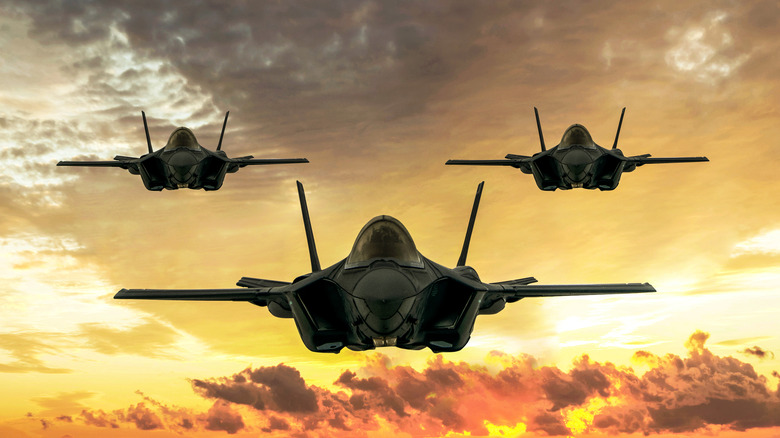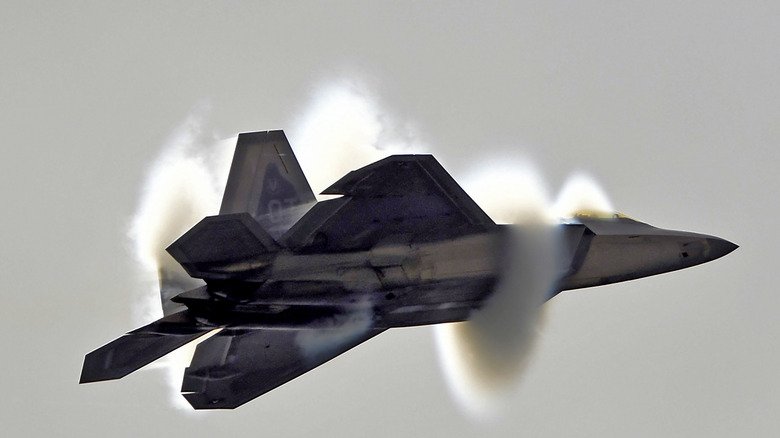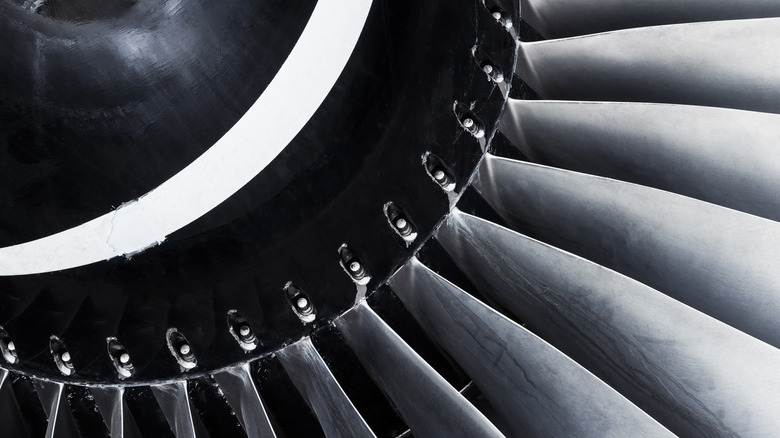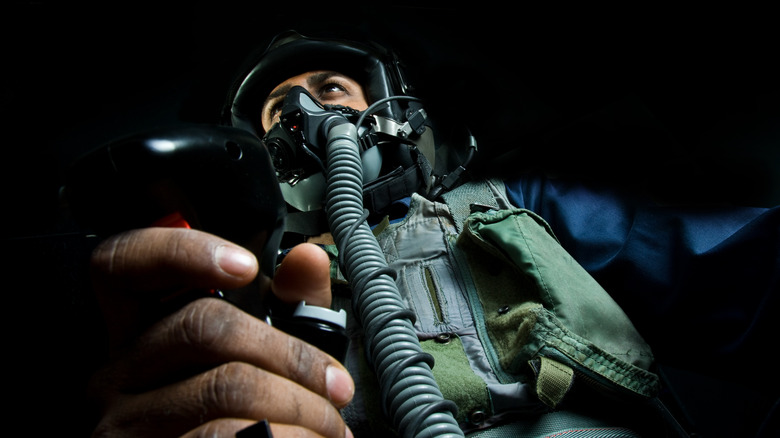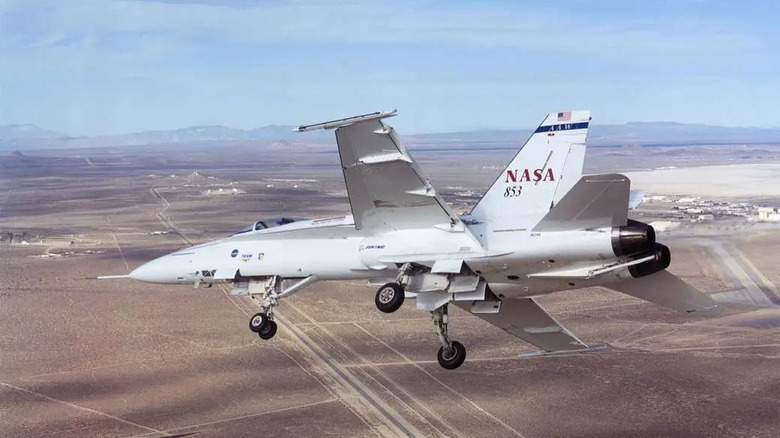What Is The Air Force NGAD Program, And What Does It Mean For The Future Of Jet Fighters?
Throughout America's military history, there have been several initiatives to update its aircraft. Whether it was the Multistage Improvement Program (MSIP) for the F-15 Eagle Fighter Jet or the Joint Strike Fighter (JSF) Program that spawned the United States Air Force's fifth-generation fighter jets, the constant advancement of military flight technology seems never-ending as threats worldwide continue to ramp up engineering capabilities.
The Next Generation Air Dominance platform (NGAD) is the Air Force's latest initiative to upgrade its aging fleet of fighter and bomber jets. While some details on the program remain clandestine, there is plenty to ascertain from what officials have announced and what military leaders and experts are saying.
Simply put, the NGAD platform is the latest collaboration between the leading aerospace and aeronautical engineering companies to develop America's next-generation fighter jets, which will likely service the armed forces for decades to come.
NGAD is the future for American fighter jets
Originating from the Defense Advanced Research Project Agency's (DARPA) Air Dominance Initiative study in 2014, NGAD stems from the Air Superiority 2030 Flight Plan developed by the USAF in 2016. This new initiative will ultimately replace fifth-generation aircraft, like the now-aging Lockheed Martin F-22 Raptor. NGAD will include a family of systems, including weapons like the AIM-260 Joint Advanced Tactical Missle.
On May 18, 2023, the Air Force also announced that it would accept proposals for the latest fighter jets, hoping to usher in the sixth generation of military aircraft. According to officials, contracts to develop the latest cutting-edge aircraft are planned to occur in 2024, with the F-22 being phased out in 2030.
The NGAD program is estimated to cost around $16 billion for research & development, and testing and will run through 2028. In 2023, the program cost an estimated $1.7 billion for American taxpayers. For now, certain specifics about the NGAD Platform remain officially classified to protect operational and technological advantages.
NGAD is developing a new propulsion system
On Aug. 19, 2022, the Air Force awarded GE Edison Works, Raytheon, Boeing, Lockheed Martin, and Northrop Grumman, each with a $975 million contract to develop Next Generation Adaptive Propulsion (NGAP), which will play a large role in the NGAD Program for the upcoming fleet of sixth-generation planes.
It will be the new propulsion system for these fighter jets as part of the NGAP system. Previous engines include those in the F-35 and F-22, the Pratt & Whitney F135 and F119, which were originally designed decades ago (though they have been upgraded over time).
While not officially confirmed, the new engines reportedly may utilize technology from GE Aeorspace's XA100 Adaptive Cycle Engine, which was proposed but eventually rejected for use in the upgraded F-35A. The XA100 three-stream adaptive cycle engines alternate between a high thrust and high-efficiency mode, which increases the range and fuel economy of the aircraft.
In addition, these new engines have better cooling and more powerful thrust, which are goals for the Air Force in its next generation of jets. There's also the chance it will incorporate yet-announced technology, but only time will tell.
NGAD Program will bring the most advanced fighter jets ever
The May 2023 Air Force announcement also stated that the new aircraft will leverage what is known as open architecture standards, enabling firms to collaborate more easily on the new planes. The development will also utilize digital design, a critical component in quickly updating and testing the latest aeronautical discoveries and developments in America's fighter jets. This should also help to reduce costs for the next generation of planes, as the eye-watering $1.7 trillion lifetime costs are a core element to the F-35's controversy.
Over the past decade, a large emphasis has been on digital design, enabling engineers and scientists to speed up the rate of research and development on new military technologies. As its name would indicate, digital design uses algorithms to help model and simulate tests for new aircraft parts before they are tested practically. This extends to all manner of aircraft parts, from fuel pumps to electrical systems.
Though practical application and real-life testing are still critical for mission success, the method has improved the ability to upgrade and test aircraft more quickly. Europe is also working toward similar efforts as part of its Future Combat Air System (FCAS), which is set to replace outdated combat systems by 2040.
NGAD program uses X-Plane technology
America's sixth-generation military aircraft will possess both air-to-air and air-to-ground fighting capabilities, melding fighter and bomber functionality together for the cutting-edge planes — though that's just scratching the surface of their likely capabilities. The NASA-run X-Planes program will have a role in, at least in part, the technology in the USAF's sixth-generation aircraft. While some of the X-Planes are strange, others have been responsible for uncovering new aircraft technology.
Revealed at the POLITICO Defense Summit on November 14, 2023, by Air Force Secretary Frank Kendall, a $1 billion initiative called Next Generation Air Dominance X-Plane program created technology that would be used in the next generation of planes. This would not be the first, as the Armstrong Flight Research Center in Edwards, California, the HQ for the X-Plane program, has been the center of aeronautic discovery since it was originally founded in 1946, including being the catalyst to the F-35 fighter jet.
According to Kendall, the NGAD program will include both crewed and unmanned aircraft. The goal isto maintain the shift towards the Pentagon to using a more versatile array of platforms in combat as well as close ties to defense manufacturers. This is all with the intended aim of making America's military more agile while reducing production and maintenance costs to field new technology.
